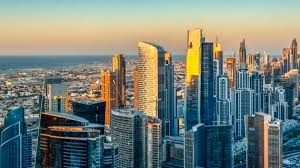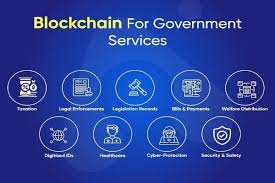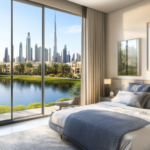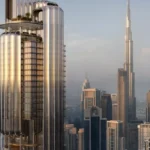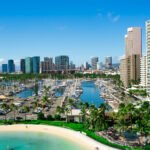Now Reading: How Dubai’s Green Energy Fuels Its Dream of Smart Cities 2025!
-
01
How Dubai’s Green Energy Fuels Its Dream of Smart Cities 2025!
How Dubai’s Green Energy Fuels Its Dream of Smart Cities 2025!

Table of Contents
Dubai is fast becoming one of the most futuristic cities on the planet. But this vision is not only about fancy skyscrapers or driverless cars. The city’s real magic lies in the perfect blend of sustainable energy projects and its ambitious Smart City goals. This synergy is shaping Dubai into a model for other cities worldwide.
A City with a Dual Mission: Green and Smart

Dubai has two main missions:
- To become one of the world’s smartest cities.
- To lead the region in renewable and clean energy production.
What’s amazing is how these two goals help and support each other.
For example, smart buildings powered by solar energy reduce carbon emissions and energy costs. Electric vehicle (EV) charging stations powered by clean energy encourage the shift from fuel-based cars to electric ones. Even waste management is becoming smart — using technology and renewable energy to reduce landfill waste.
This is not a coincidence. Dubai’s government planned this combination carefully to make sure that one effort fuels the other.
Dubai Clean Energy Strategy 2050: The Foundation Stone
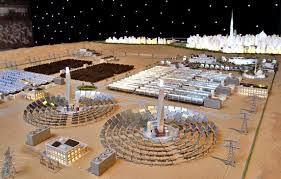
At the heart of this synergy is the Dubai Clean Energy Strategy 2050. Its goal is to make Dubai the city with the lowest carbon footprint in the world by 2050.
The plan includes:
- 75% of Dubai’s total power to come from clean energy by 2050.
- Large-scale solar parks like the Mohammed bin Rashid Al Maktoum Solar Park, which will produce 5,000 MW of power by 2030.
- Promotion of green buildings and smart infrastructure.
The clean energy produced will help power smart city solutions — such as AI-based traffic control, smart grids, intelligent lighting systems, and IoT-powered services.
Smart Dubai 2021 and Beyond: A City Run on Data and Clean Power
Dubai’s Smart City plans, under the Smart Dubai 2021 vision, focus on using data and technology to improve the lives of citizens, businesses, and visitors.
The key pillars are:
- Smart Economy: Digital services for businesses and e-commerce powered by sustainable energy.
- Smart Mobility: AI-powered driverless transport and electric vehicles supported by solar charging points.
- Smart Environment: Waste recycling plants, smart water management, and green energy to reduce pollution.
- Smart Governance: Paperless, digital government services powered by renewable energy.
All these systems depend on reliable, sustainable power — exactly what the Clean Energy Strategy aims to provide.
For example, smart electric grids automatically adjust the city’s power needs based on real-time demand and supply data. This prevents waste and saves millions of dollars every year.
The Role of the Mohammed bin Rashid Al Maktoum Solar Park
This massive solar park is the world’s largest single-site solar project. Once completed, it will save over 6.5 million tonnes of carbon emissions every year. But its impact is more than environmental.
It provides clean power for:
- Dubai’s smart buildings and homes.
- Data centers supporting smart services.
- Public transport systems, including driverless Metro lines.
This park is the perfect example of how clean energy directly supports smart technology and services.
Electric Mobility: A Smart and Green Transport Future
Dubai is heavily investing in electric mobility as part of its smart city plans. In 2023, the city announced that 42% of its taxis will be eco-friendly by 2026, either electric or hybrid.
The Roads and Transport Authority (RTA) is setting up smart EV charging stations across the city — powered by solar energy. This step reduces emissions and makes electric vehicles more accessible to the public.
Driverless vehicles, another part of the Smart Dubai vision, will also benefit from this clean energy infrastructure.
Smart Grids and Intelligent Buildings: Powered by Clean Energy
Smart grids are electrical grids that use digital technology to monitor and manage the transport of electricity from all sources — including solar, wind, and traditional sources — to meet the varying electricity demands of the city.
This allows Dubai to:
- Balance energy supply and demand.
- Reduce waste and costs.
- Provide uninterrupted clean energy to homes, offices, and industries.
Similarly, intelligent buildings now feature smart lighting, air conditioning, and security systems. These systems work best when they have a steady source of renewable energy.
For example, many of Dubai’s new skyscrapers are being built as Net Zero Energy Buildings (NZEBs) — producing as much energy as they consume, thanks to solar panels and energy-saving technologies.
The Economic Benefit: A Future-Proof Dubai
Dubai’s leaders understand that being green is also good business. The combination of smart technology and renewable energy saves money, attracts investors, and boosts Dubai’s global reputation.
The city is fast becoming a hub for:
- Green tech startups.
- AI and IoT companies.
- International companies focused on smart solutions.
This means more jobs, better services, and higher quality of life for Dubai’s residents.
Challenges Ahead — and How Dubai Plans to Overcome Them
Of course, such an ambitious plan comes with challenges:
- High cost of new technologies.
- Public awareness and participation.
- Need for constant innovation.
But Dubai is tackling these by:
- Encouraging private sector partnerships.
- Offering incentives for green businesses.
- Running public awareness campaigns about sustainable living.
Conclusion: Dubai’s Sustainable and Smart City Dream is Becoming Real
Dubai’s synergy between sustainable energy and smart city development is not just a future dream — it is happening right now. By connecting clean energy projects with digital, smart solutions, Dubai is building a city that is efficient, environmentally friendly, and enjoyable to live in.
Other cities around the world are watching — and may soon follow in Dubai’s footsteps.
Read More;- Shobha Realty Launches Its Most Luxurious Project Yet—Full Details Inside 2025



